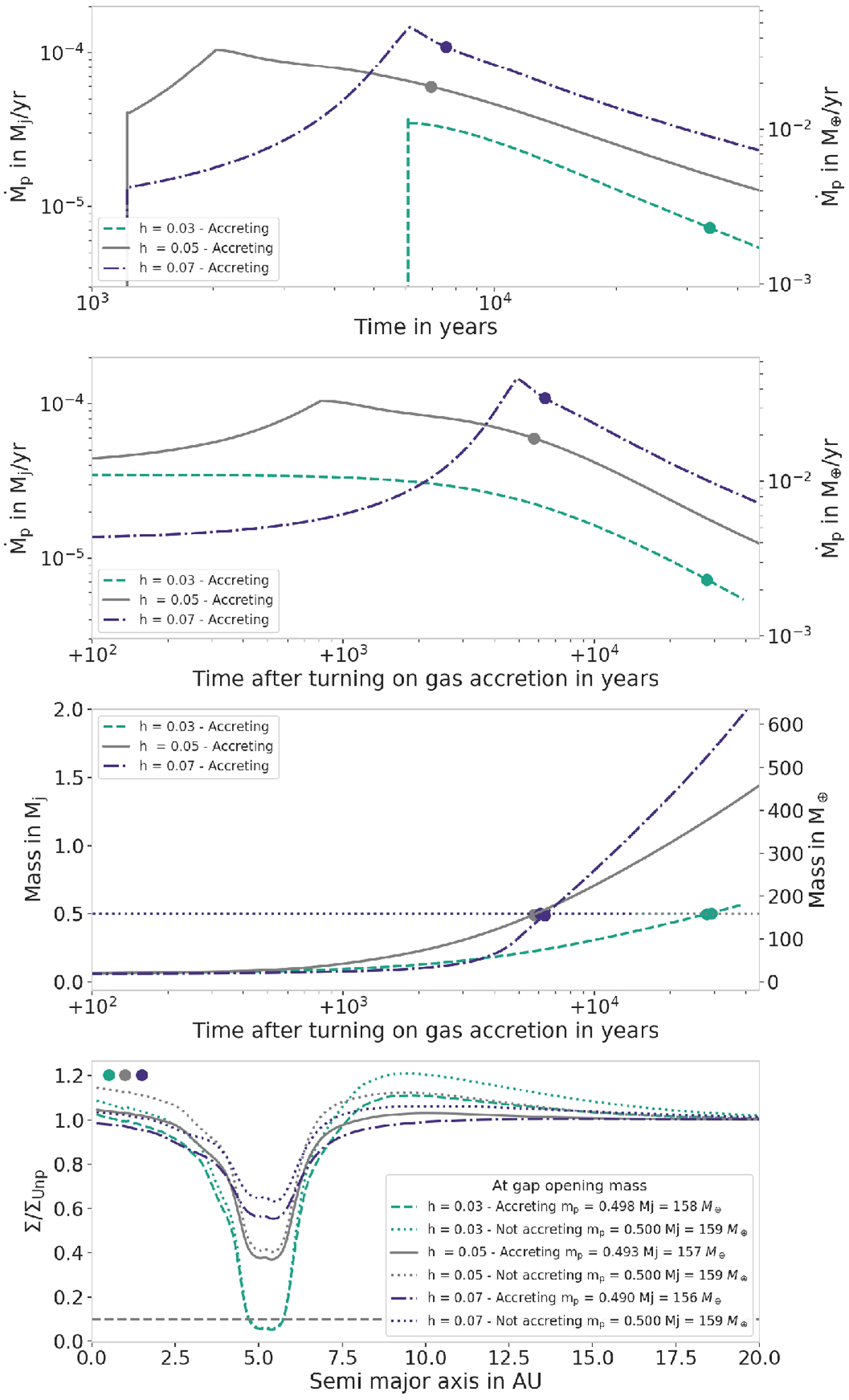Fig. 8

Influence of different aspect ratios with α = 10−2 and minit = 20 M⊕. Top: time evolution of the planetary accretion rate. The flip in the accretion rate occurs at different moment (i.e., different planet mass) due to the dependence on h of the Machida accretion rate (Eq. (2)). As the time needed for the initial mass to reach an equilibrium is higher for lower aspect ratios, gas accretion starts later for h = 0.03 (see Table 2). Middle 1: evolution of the accretion rates as a function of the time after gas accretion is turned on. Middle 2: time evolution of the planetary mass. Lower aspect ratios result in more massive planets. Bottom: perturbed surface density at the time where mp = 0.5 MJ (dots on previous panels). The two effects added up here make the gap shapes really different, namely, the influence of the aspect ratio on the shape of the gap and the time at which the planet reaches 0.5 MJ. We comparethe gap shapes of accreting planets with gaps created by fixed mass planets: depending on the aspect ratio, gas accretion has a different influence. The horizontal gray dashed line marks the gap-opening criterion as defined by Crida et al. (2006).
Current usage metrics show cumulative count of Article Views (full-text article views including HTML views, PDF and ePub downloads, according to the available data) and Abstracts Views on Vision4Press platform.
Data correspond to usage on the plateform after 2015. The current usage metrics is available 48-96 hours after online publication and is updated daily on week days.
Initial download of the metrics may take a while.


